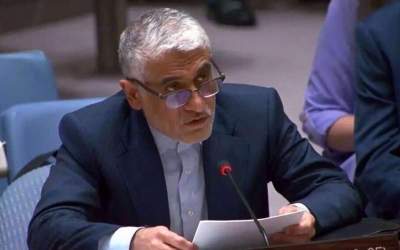Thursday 25 October 2012 - 16:35
Story Code : 8703
Even if both candidates agree on Iran, the military option still affects 75 million people
Up until the Oct. 22 presidential debate, the hardline on Iran was one of the�distinguishing factors�between candidates Obama and Romney, where Romney identified with more hawkish positions: sending troops to Syria and rallying a war cry for Iran. Romney wrote,�"If you want peace, prepare for war"in his op-ed on Iran. Like many presidential elections coming to a close, the hawkish candidate has moderated his rhetoric.
Since the Republican and Democratic National Conventions, I have attended over 10 briefings that reviewed U.S.-Iranian relations, mostly through a military conflict lens. Both Iranian-American (yes, there are�Iranian-Americans) and non-Iranian-American experts would assess either a) the possibility of Iran "going nuclear" (or more precisely enriching uranium beyond the 20 percent threshold and build a nuclear weapon) or b) reassessing the likelihood that Iran will actually attack the United States and/or Israel. All ten briefings filled to capacity because there is no sequel to the famous film�Dr. Strangelove: Or How I Learned to Stop Worrying and Love the Bomb.
75 Million People Worry
The�"Understanding Iranian Public Opinion"�briefing looked at the specific issues of Iranian nuclear power and how its government uses it as leverage. However, as the one briefing that actually described the public perception and views of Iranian people at the Stimson Center, it was half-empty. I will hope for the best and assume that the U.S. military and various Congressional staffers already received the briefing earlier in a more private setting. I hope, because Iran has over 75 million people -- around the same amount as Turkey -- and we should have some sense of what they think before we decide to attack them since we know that citizens do not always agree with what their governments choose to do. Case in point: Greece, Syria, Egypt, Cuba, among others.
No matter which expert presented, the most telling moment was noting how no one really asked the specifics of how many civilians actually were hurt by the economic sanctions before stepping in with military strikes. Rather the focus geared towards flirting with military strikes since data on the economic situation was not as transparent as the data showing Iran's nuclear reactor sites. My most popular tweet this month highlighted the disconnect between military intelligence and economic data: "@wlp: Military official scribbles down "chicken crisis" as Iranian economist describes food prices and political unrest." )
During the final presidential debate,�Bob Schieffer�asked President Obama and Governor Romney what the greatest national security threat to the U.S. is. Romney responded with,"The greatest national security threat is a nuclear Iran," while Obama led off with China. Schieffer's question reflected a reasonable concern expressed by the American voter. Perhaps Romney's hawkish answer reflected an American concern: According to a�recent Gallup poll, "Fifty-seven percent of Americans were very concerned about the economic impact of the political situation in Iran." Not surprisingly in the last presidential debate, Iran was�mentioned�forty-seven times. And in one of those instances, Romney�incorrectly stated�that Syria is Iran's 'route to the sea.' Again, it is very worrisome if a) we are unaware of what 75 million people think, and b) where this country including these 75 million people is actually located.
Mapping the Target
There are four major nuclear facilities in Iran that draw global attention: 1) Natanz, 2) Bushehr, 3) Isfahan, and 4) Arak (reactor not operational yet). Perhaps it is easy to mispronounce the names of the facilities. Precision is an art. So is targeting the facilities themselves to minimize collateral damage -- meaning that strikes will take out human lives, inevitably. Death is the short-term effect. The mid- to long-term effects are actually worse. According to the joint report by the Hinckley Institute and Omid for Iran, environmental degradation will�negatively impact food and water supplies�for at least a generation:
1."5 million people live in areas contaminated by radioactivity"
2."Destruction of contaminated livestock and food crops"
3."Loss of 10,000 square kilometers (3,861 square miles) of agricultural land"
4."Contamination of fresh water supplies and tables in Iran and the Persian Gulf region"
Ironically, there is something worse than death. Factor in the element of a self-fulfilling prophecy, and those Iranians, who have now lost loved ones, will not blame their government. They will blame the U.S. -- regardless of who which political party is in power or which ally professes to stand with us -- because U.S. military strikes embolden both pro-regime and anti-regime people who have lost neighbors in airstrikes.
Analysts and those that argue for preemptive strikes will qualify that the injury or loss of civilian life -- ranging between�70,000�to�2.9 million�-- is part of "unintended consequences." The Department of Defense has used the sophisticated techniques, like Hazard Prediction and Assessment Capability Software, to project the potential damage and estimate casualties in immediate areas, like Isfahan, over the last decade. The thing is, if the DOD has rerun several models to estimate a ballpark figure regarding casualties enough times, then is it fair caveat loss of life as "unintended consequences" when we had a pretty good idea of how many would probably die or experience radiation poisoning? Is it really intellectually honest or objective to argue that military strikes against Iran may result in unintended consequences given the observed effects of the Chernobyl incident, bombings of Hiroshima & Nagasaki, and the Gilan accident?
The Iran Project is not responsible for the content of quoted articles.
# Tags











